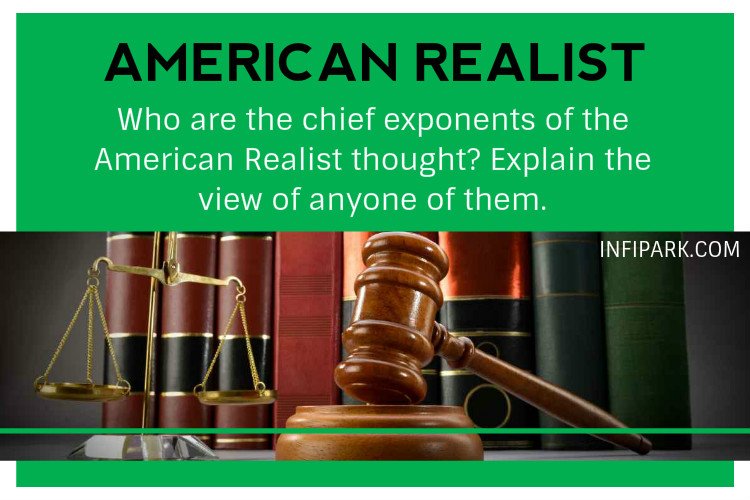Who are the chief exponents of the American Realist thought? Explain the view of anyone of them.
Ans. American Realist thought—American Realist thought is the continuation of Analytical Positivism and Sociological approach. It is analytical because they are concerned with law as it is and not as it ought to be. Their ultimate aim is the reform of (aw, but this reform must be. preceded by understanding of law as it is, Secondly, they view the ‘law in the perspective of sociological factors. They visualize the effect of social condition on law as well as the effect of law on society but they are mainly concerned with the making of law. Professor Stone calls the Realist movement a “gloss” on the sociological approach.
The Realist movement is centered on the judge. Law is what the judges decide, and hence the approach is essentially empirical. Law, i.e., the decisions of judges is brought by ascertainable facts, and includes the personality of individual judges, his social environment, the economic condition, emotions, psychology, etc.
Mr. Justice Holmes said if one wishes to know what law is one Should view it through the eyes of a bad man who is concerned with what Will happen to him if he does certain things.
According to Dias, among the new techniques, which have opened up a new vista in the study of law; the following are the most important:
1. The Realists have attempted studies of case-law from a point of view which regards the judgment, not as descriptive or explanatory of the decision but rather as a subsequent rationalization by the judge in. conventional legal terminology of a decision which he has already reached.
2. The inquiry into what judges do has opened up further lines of investigation. So the study of personalities and the psychology of juries and judges has come in.
3. The Realists also study the different results reached by court within the framework of the same rule or concept in relation to the variation in the facts of the cases, and the extent to which courts are influenced in the application of rules by the procedural machinery which exists for the administration of law.
4. Too much attention traditionally has been devoted to the decision processes in Appellate Courts. The Realists urge that research should be broadened so as to include the activities of lower courts and the relation between their work and those of upper courts.
The seeds of the American Realists movement are traceable to a famous paper of Mr. Justice Holmes in 1897. He narrates the; novel way of looking at law. “If you wish to know what law is,” he said, “you must regard it from the point of view of a bad man, who is only concerned with what will happen to him if he does certain thing.”
Judge Frank divided the Realists into two groups : rule-skeptics and ‘fact-skeptics’. The rule-skeptics are those who concentrate on Appellate Courts and on the nature and uses of legal rules. The fact skeptics are those who concentrate on trial courts and who found the major cause of legal uncertainty in the uncertainties of fact finding, judge Frank claimed that the degree of legal uncertainty was far more extensive, in fact, than most legal scholars were prepared to admit.







